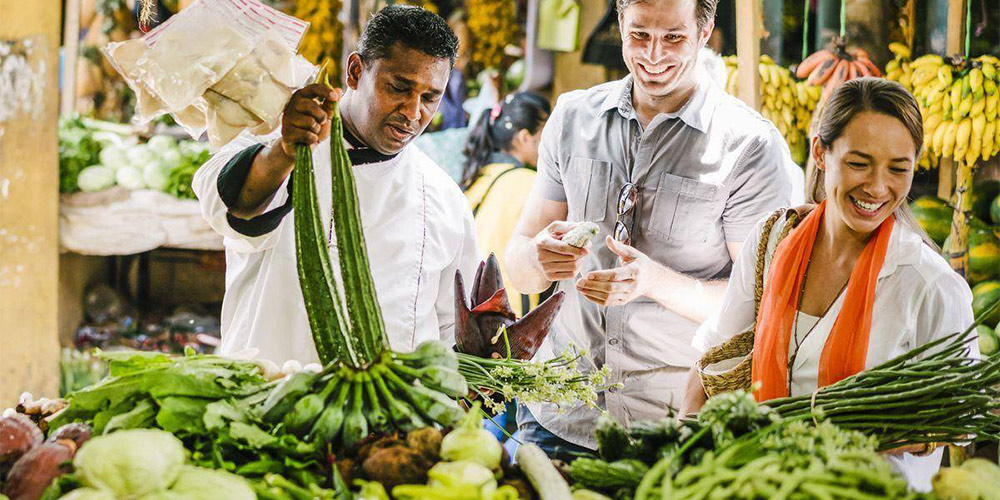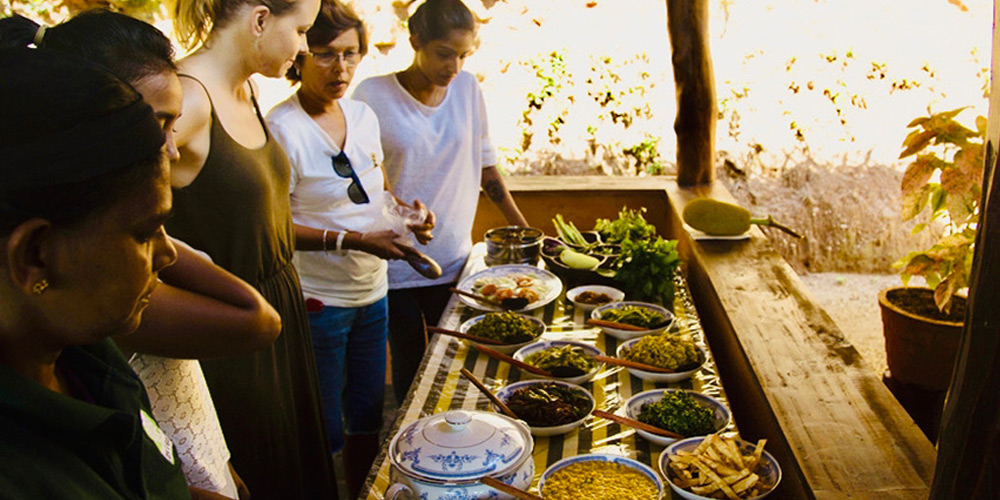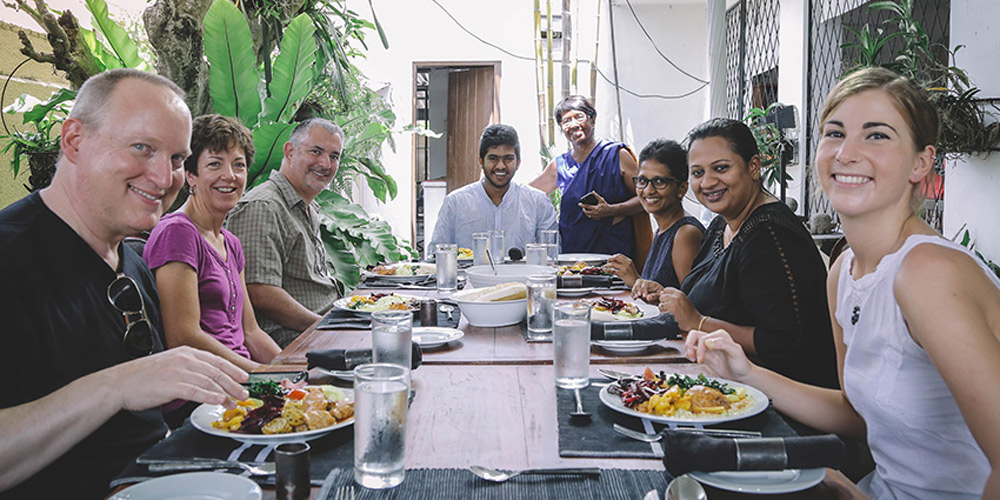Nature’s bounty has been bestowed upon the island nation of Sri Lanka, with an uncommonly liberal hand. The soil, the climate and the industry of the local populace have been pivotal to the growth of its legendary treasures of spices and tea, which have found their way to the four corners of the earth. It’s not surprising that Sri Lanka’s culinary pursuits have been shaped by this treasure trove; but what’s also interesting is that the country being a cauldron of ethnic diversity and foreign influences as a trading nation has, remarkably, also defined Singhalese kitchen adventures. Enjoying the pleasures of cooking and gobbling up a delicious home-cooked meal is an excellent way to discover Sri Lanka’s rich cross-cultural heritage of culinary traditions influenced by the Indian sub-continent, Indonesia, Malaysia, and the Dutch colonial era.

The fun-filled culinary adventure starts with your hostess taking you on a shopping spree in the community market to pick up fresh produce, spices and other ingredients that you will need to put together as a yummy meal of several dishes in her family kitchen.
Back in the kitchen learn the correct way to clean, chop and cook the different dishes on the menu for the meal. While you are about it, take measure of the kitchen shelves and the line-up of spices that are the basic essentials of most home kitchen on the island. The plenitude of Sri Lanka’s spice plantations are captured in some small way in those containers from where you will discover the culinary magic created cardamom, Goroka, fennel seeds, black mustard seeds, black peppercorns, cumin seeds, nutmeg and mace, tamarind, turmeric powder, curry powder, chillies (dried and fresh), cinnamon, cloves, coriander seeds, fenugreek.

The vegetables and herb and fish and meat section is no less exciting as you take in the varied textures and the fragrances of lemongrass, pandanus leaf, Maldive fish flakes, coconut powder, onions, chillies, ginger and garlic.
An everyday Sri Lankan kitchen staple is curry and rice, which are easy to make under the watchful eye of your hostess. But timing and the right amount of spices can make even these basic dishes really tasty. Do remember families have treasured recipes for even these basic dishes, which can change by simply adding or subtracting even the most common spices. So it’s quite possible that you discover that the same dish tastes different from place to place because of the spices used, as well as the portion put in, to bring out the flavours desired by the person cooking the dish.

In Galle, for example, your local hostess will lead you through an exciting culinary experience in a mud-hut kitchen. Pay attention to the techniques and key ingredients used in Sri Lankan cooking here. Learn how coconut milk is made. Amidst much laughter and friendly chitchat, don’t be shy about trying your hand at tempering, frying, boiling, grating and caramelizing your ingredients. Enjoy the results of your cooking of the meal dished out on a lotus leaf. Eat it local style–let your hands serve as forks and spoons!!
While trying your hand at a new culinary experience on Sri Lanka’s eastern coast, you will discover the wonderful world of biryanis, an aromatic rice dish known as buryani here amongst the Muslim community. These Muslims are the descendants of the Arab traders who brought this delicious dish to the island nation. Your host will take you step by step to making a yummy pot of biryani and its side dishes with seasonal ingredients from the family kitchen garden.


